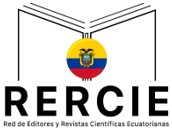Ruta y camino: memoria, historia y arqueología del Qhapaq Ñan (Capacñán ) en el valle de Guayllabamba (Sierra Norte del Ecuador).
DOI:
https://doi.org/10.5281/zenodo.10037192Keywords:
Qhapaq Ñan, Capacñán, route and road, Guayllabamba river and valley, Inca monumentsAbstract
The case study research presented here distinguishes “route” from “road” and clarifies the understanding and study of ancient road systems associated with the Qhapaq Ñan1 through a case study. This is the section identified between the hill of Azuajatu, in the municipality of Guayllabamba, and the hill of Gualaquincha, in the municipality of Calderón (10.8 linear kilometres). This section is divided into 4.8 km of documentable road, using unmanned aerial vehicles (UAV) and pedestrian routes, and 6 km of reconstructable road, using least-cost analysis of the topography of the terrain to identify the optimal route(s) of the road. We believe that the section coincides with the route taken by the soldier Cieza de León around the mid-1540s (1544-45?), when he went from the “aposentos de Cochasquí” to the current historic centre of Quito, necessarily crossing the Pisque River and, for geographical, historical and architectural reasons that we will show, a narrowing of the Guayllabamba River, which was used as an obligatory passage at that time. Due to the current state of conservation of the section of the road and its relationship with several monumental archaeological sites with a clear Inca affiliation, we believe it is advisable to develop a programme of improvement that takes into account the active participation of the communities of the municipalities of Guayllabamba and Calderón, as well as other social actors interested in the preservation of the heritage of the Capacñán.2
1. The term “Qhapaq Ñan” expresses the phonology of the Cusco Quichua language and has been adopted by convention by Unesco to name the entire Andean road system, which represents an invaluable heritage for South America and humanity in general (Unesco, 2014).
2. We adopt the term “Capacñán” in accordance with the morphosyntactic and phonological diversity of the Quichua that developed in the equatorial Andean region after the arrival of the Incas, thus recognising cognate forms of Cusco Quichua with modern Barbacoan languages (Floyd, 2022). On the other hand, we believe that “capac” is inserted as a prefix in other toponyms of the equatorial Andean region and that Capacñán means “main road” (Anhalzer, 2022a and b).
Downloads
Published
How to Cite
Issue
Section
License
Copyright (c) 2023 Alden Yépez, Ana Sevilla, Jorge Anhalzer, María Antonieta Vásquez, Irmela Herzog, Karina Neumann

This work is licensed under a Creative Commons Attribution-NonCommercial-ShareAlike 4.0 International License.
INPC, Revista del Patrimonio Cultural del Ecuador provee acceso libre a su contenido digital para lectura y descarga, con el propósito de democratizar el conocimiento y la difusión de la investigación. Se permite el acceso y empleo del material siempre y cuando se reconozca a los autores/as, no se lo use comercialmente y se lo comparta con un criterio similar.
Los autores/as conservarán sus derechos de autor; podrán difundir sus artículos en otras obras impresas o digitales, sitios personales o institucionales, dando crédito a su publicación original en esta revista, reconociendo así su trabajo editorial y potenciando su alcance.








